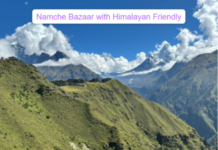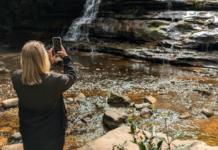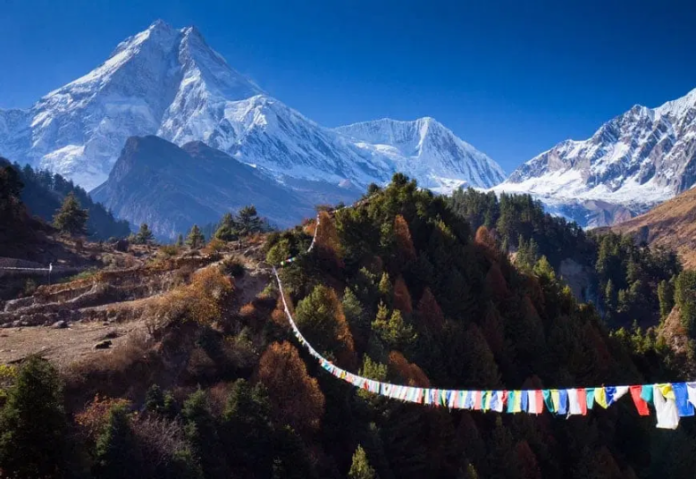Nestled in the remote Mansiri Himal range of the Nepalese Himalayas, the Manaslu Circuit Trek stands as a testament to pristine natural beauty and profound cultural immersion. Often hailed as a less-trodden alternative to the more popular Annapurna and Everest circuits, this challenging yet incredibly rewarding journey encircles Mount Manaslu, the world’s eighth-highest peak at 8,163 meters (26,781 feet). For adventurers seeking an authentic Himalayan experience, far from the madding crowds, the Manaslu Circuit offers an unparalleled odyssey through diverse landscapes, ancient traditions, and breathtaking panoramas.
The trek typically spans around 13 to 17 days, beginning with a drive from Kathmandu to Machha Khola or Soti Khola, and concluding by joining the Annapurna Circuit trail at Dharapani. This circular route guides trekkers through a captivating tapestry of ecological zones, from lush subtropical forests teeming with rhododendrons and diverse wildlife in the lower valleys to arid, high-alpine deserts and glaciated terrain as one ascends. The ever-present soundtrack of the Budi Gandaki River, with its rushing waters and cascading waterfalls, accompanies much of the early journey, adding to the serene ambiance.
One of the most defining characteristics of the Manaslu Circuit is its rich cultural heritage. Unlike many commercialized trails, the Manaslu region has largely preserved its ancient traditions, heavily influenced by Tibetan Buddhism. As trekkers progress through villages like Jagat, Deng, Namrung, Lho, and Samagaun, they are immersed in a living cultural museum. Stone houses adorned with intricate carvings, fluttering prayer flags, ancient mani walls, and sacred gompas (monasteries) are ubiquitous, serving as constant reminders of the deep-rooted spirituality of the local Sherpa and Bhutia communities. Interactions with the warm and hospitable locals, often shared over a cup of yak butter tea or traditional dal bhat, provide invaluable insights into their simple yet resilient way of life. Visiting Ribung Gompa in Lho or observing local ceremonies further deepens this cultural connection.
The trek’s highlight and most formidable challenge is undoubtedly the crossing of the Larkya La Pass. Standing at a formidable elevation of 5,106 meters (16,752 feet), this high mountain pass demands physical and mental fortitude. The ascent to the pass, often involving navigating snowy and icy patches, is arduous, but the reward is a truly ethereal panoramic vista. From the summit, a sea of snow-capped peaks unfolds, including the majestic Manaslu itself, along with Himalchuli (7,893m), Ganesh Himal (7,422m), Ngadi Chuli (7,879m), and a host of other Himalayan giants. The descent into the picturesque valley of Bimthang on the other side marks a triumphant moment and offers equally stunning views.
Beyond the iconic Larkya La, the Manaslu Circuit boasts numerous other natural wonders. The Manaslu Conservation Area, which the trek largely traverses, is a protected zone dedicated to preserving the region’s unique biodiversity. Trekkers might spot elusive wildlife, from various bird species to the rare and majestic snow leopard, though sightings are incredibly rare. The tranquil Birendra Lake, nestled near Samagaun, offers a stunning side trip with its pristine waters reflecting the surrounding peaks. The diverse landscapes, ranging from terraced fields to dense rhododendron forests (especially vibrant in spring) and high-altitude pastures, ensure that every day presents a new visual spectacle.
Difficulty and Preparation:
The Manaslu Circuit Trek is categorized as moderate to difficult, requiring a good level of physical fitness and mental endurance. The significant altitude gain, from around 800 meters at Machha Khola to over 5,100 meters at Larkya La, necessitates proper acclimatization. Trekkers should prepare for long hours of walking (5-8 hours daily), steep ascents and descents, and rugged, often uneven terrain. Prior trekking experience is beneficial, but even beginners can undertake this journey with adequate physical preparation, including regular hikes and cardiovascular exercises.
Altitude sickness is a genuine concern, and trekkers must be vigilant for symptoms like headaches, nausea, dizziness, and fatigue. Gradual ascent, incorporating acclimatization days (typically at Samagaun), staying well-hydrated, and avoiding alcohol are crucial preventative measures. It is strongly advised to trek slowly and listen to your body, descending to a lower altitude if symptoms worsen.
Best Time to Trek:
The prime seasons for the Manaslu Circuit Trek are Autumn (September to November) and Spring (March to May). Autumn offers stable weather, crisp air, and crystal-clear skies, providing unparalleled mountain views after the monsoon rains. Spring brings blooming rhododendrons, pleasant temperatures, and clear mornings, although some higher sections might still retain snow. The monsoon season (June to August) is generally avoided due to heavy rainfall, slippery trails, and increased landslide risks, while winter (December to February) presents freezing temperatures and potentially snow-blocked passes, making the Larkya La crossing highly challenging and risky.
Permits and Regulations:
The Manaslu region is a restricted area, and specific permits are mandatory. Trekkers require:
- Manaslu Restricted Area Permit (RAP): This permit has a seasonal cost, typically higher from September to November (around $70-$100 USD per week) and lower from December to August (around $50-$70 USD per week).
- Manaslu Conservation Area Project (MCAP) Permit: Approximately 3000 NPR (around $27 USD).
- Annapurna Conservation Area Project (ACAP) Permit: Approximately 3000 NPR (around $27 USD), as the trek exits into the ACAP region.
Crucially, solo trekking is not permitted on the Manaslu Circuit. The Nepalese government mandates that all trekkers must obtain permits through a registered local trekking agency and be accompanied by a licensed guide. This regulation is in place for safety, emergency response, and to support local economies. Agencies can also assist solo travelers by helping them join a small group to meet the minimum two-person requirement for the restricted area permit.
Accommodation and Food:
Accommodation along the Manaslu Circuit is primarily in basic teahouses and lodges. These family-run establishments offer simple rooms, often with twin beds and foam mattresses. While amenities are basic, the hospitality is often warm. Shared squat or Western-style toilets are common, and hot showers might be available for an extra fee, particularly at lower elevations. Carrying a good quality sleeping bag is highly recommended for added warmth, especially at higher altitudes.
Food in the teahouses is generally hearty and nutritious, though choices become more limited as one ascends. Staple meals include dal bhat (lentil soup with rice and vegetables, often with unlimited refills), noodles, momos (dumplings), Thukpa (noodle soup), and various potato dishes. Unique local items like yak milk, yak butter, and yak meat may also be available. Prices for food and drinks increase with altitude due to transportation challenges.
Conclusion
The Manaslu Circuit Trek is more than just a hike; it’s an profound expedition into the untamed beauty and ancient soul of the Himalayas. It offers a unique opportunity to witness towering peaks, traverse diverse ecosystems, and deeply connect with a rich, preserved culture. While demanding, the sense of accomplishment upon completing this circuit, coupled with the unforgettable landscapes and genuine human connections, makes it an experience that resonates long after the final steps are taken. For those yearning for an authentic Himalayan adventure away from the well-trodden paths, the Manaslu Circuit beckons with its promise of discovery and unparalleled natural and cultural wonders.
Key Takeaways:
- Authentic Himalayan Experience: Offers a less crowded and more culturally immersive trek compared to Everest or Annapurna.
- Stunning Scenery: Features diverse landscapes from subtropical forests to alpine deserts, with panoramic views of Mt. Manaslu and surrounding peaks.
- Cultural Immersion: Provides deep insights into Tibetan Buddhist culture through local villages, monasteries, and interactions with indigenous communities.
- Larkya La Pass (5,106m): The trek’s highest point and a challenging but incredibly rewarding experience with breathtaking views.
- Physical Demands: Requires good physical fitness and preparation due to significant altitude gain and rugged terrain.
- Altitude Sickness: A serious concern requiring slow ascent, acclimatization days, and proper hydration.
- Best Seasons: Autumn (Sept-Nov) and Spring (Mar-May) offer optimal weather and clear views.
- Mandatory Guide and Permits: Solo trekking is prohibited; permits must be obtained through a registered agency, and a licensed guide is compulsory.
- Basic Accommodation: Teahouses provide simple lodging and hearty meals, emphasizing a rustic, local experience


















